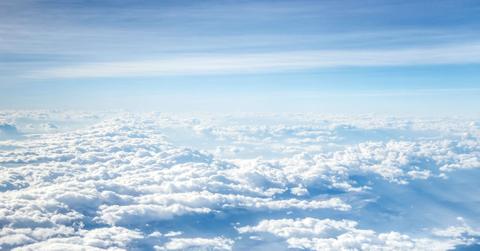The Ozone Layer Is Recovering From Depletion
Thanks to the enforcement of the Montreal Protocol, the ozone is now on track to heal partially by 2030, and completely by 2060.
Updated Nov. 6 2018, 1:20 p.m. ET
The ozone layer appears to be healing itself, after years of depletion due to harsh man-made chemicals. According to the UN, the ozone layer is recovering at a rate of 1-3 percent per decade, and may heal completely by 2060.
The latest report on ozone depletion — conducted every four years by UN Environment, NASA, NOAA, the World Meteorological Organization, and the European Commission — found hopeful signs of recovery. Since 2000, researchers have noticed an increase in upper stratospheric ozone of 1-3 percent per decade, excluding polar regions. What’s going on there? The hole in the ozone over the Antarctic continues to occur each year, though researchers believe severe depletion has been avoided and that even this patch is closing up.
At the current rate, the ozone over the northern hemisphere and mid-latitude are on track to heal by the 2030s, with the southern hemisphere following in the 2050s, and the polar regions by 2060.
So how did the ozone manage to change course? It’s all thanks to the Montreal Protocol, a treaty designed to stop the spread of ozone-depleting substances (ODS). This category contains a wide range of chemicals, including chlorofluorocarbons. As Reuters notes, these chemicals were once commonly found in spray cans and refrigerators.
But under the terms of the Montreal Protocol, 197 countries have decreased or phased out the production and circulation of ODS. The agreement was ratified in 1987 and now, over three decades later, its corrective measures are finally showing results.
“The Montreal Protocol is one of the most successful multilateral agreements in history for a reason,” Erik Solheim, head of UN Environment, said in a press release.
“The careful mix of authoritative science and collaborative action that has defined the Protocol for more than 30 years and was set to heal our ozone layer is precisely why the Kigali Amendment holds such promise for climate action in future.”
The Kigali Amendment is the latest revision to the Montreal Protocol, set to take effect at the start of 2019. It calls for additional cuts to ODS, specifically hydrofluorocarbons. Signatories will have to decrease the production and consumption of these gases by over 80 percent — and 58 countries already have.
Though scientists at UC Irvine warned of ozone destruction in 1974, the problem didn’t receive widespread attention until the early 1980s. The ozone layer protects the planet from ultraviolet radiation, which can lead to skin cancer and cataracts in humans, and impair photosynthesis in plants. So when news spread of a “hole” in this portion of the atmosphere, people understandably panicked.
The Montreal Protocol followed soon after, and has become one of the biggest success stories for environmentalists. By U.S. government estimates, it's expected to avoid over 280 million cases of skin cancer, about 1.6 million skin cancer deaths, and over 45 million cases of cataracts in America alone.
NASA reported similarly encouraging results on the ozone layer's progress earlier this year, when data from the Aura satellite confirmed a 20 percent decline in ozone depletion since 2005.
